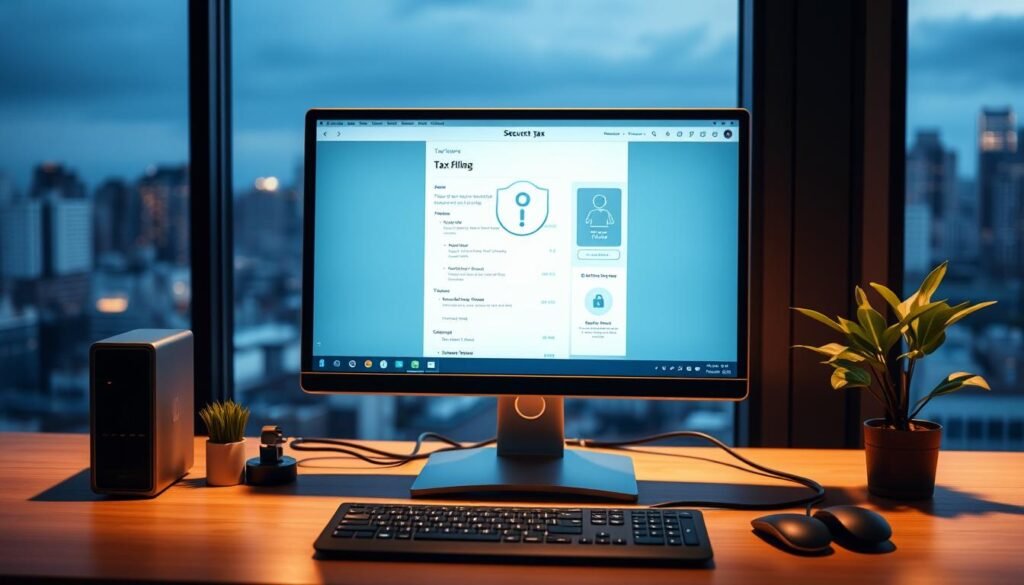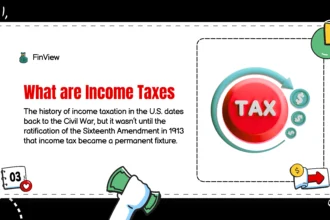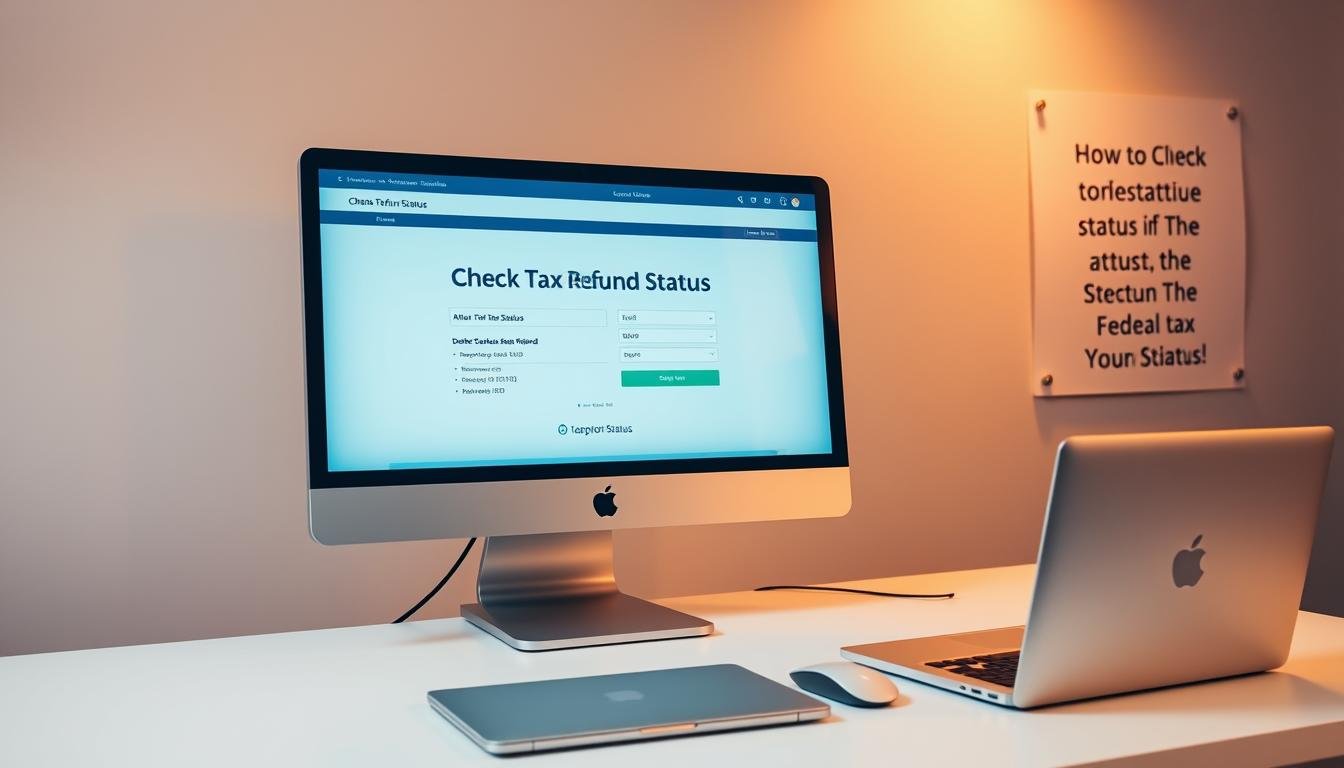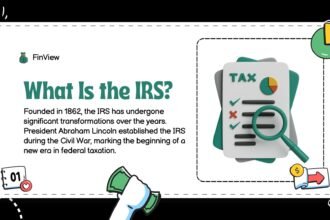Millions of taxpayers in the United States are eligible to file their taxes online for free. As we approach 2025, it is imperative to understand the options for e-filing taxes. Recent data indicates that nearly 37% of taxpayers qualify for free tax filing through platforms such as TurboTax Free Edition. This service supports a straightforward Form 1040 and a limited array of tax credits.
We will navigate you through the process of e-filing your taxes online for free. We will examine the available choices, including H&R Block’s free version, which imposes no income restrictions. TaxSlayer is also an option for those with simple tax situations and taxable income not exceeding $100,000.
Grasping these options is essential for making informed decisions regarding your tax filing process.
Key Takeaways
- Several tax filing software providers offer free filing options, including TurboTax, H&R Block, TaxSlayer, and TaxAct.
- The IRS’ Free File program is available for taxpayers with an adjusted gross income of $84,000 or less.
- H&R Block’s free version has no income restrictions and can handle various tax forms and income sources.
- TaxSlayer’s free version is available for simple tax situations with taxable income $100,000 or less.
- Some providers offer free state returns with their free versions, like H&R Block and TaxSlayer.
Understanding Free Tax Filing Options in 2025
The advent of free tax filing services heralds a paradigm shift in tax preparation, with numerous government-backed initiatives and software solutions poised to dominate the 2025 tax season. This development empowers taxpayers to leverage tax preparation online platforms, which offer both cost-free and expedient services.
The IRS Free File program stands as a cornerstone, enabling eligible taxpayers to file taxes electronically without financial burden. This initiative targets those whose income falls below a specific threshold, generally pegged at $73,000, albeit subject to fluctuations.
Beyond the IRS Free File, a plethora of free tax filing software options emerge, addressing a spectrum of taxpayer requirements. Noteworthy among these are:
| Software | Eligibility | Key Features |
|---|---|---|
| TurboTax Freedom Edition | Income below $36,000 | Simple return filing, W-2 support |
| H&R Block Free File | Income below $73,000 | Basic return filing, audit support |
| TaxAct Free File | Income below $73,000 | Simple to complex returns, military support |
Grasping the nuances of these options is imperative for taxpayers to make well-informed decisions regarding their tax filing. Opting for the most suitable free tax filing service ensures the accurate and efficient processing of their tax obligations.
Who Qualifies for Free Online Tax Filing?
Eligibility for free online tax filing hinges on income thresholds and other qualifying criteria. The IRS, along with various tax software providers, extends free filing options to those who meet the criteria.
Income Limits and Other Qualifying Factors
The cornerstone of eligibility for free online tax filing is income level. Taxpayers with incomes below a certain threshold qualify for free filing. For example, the IRS Free File program is accessible to individuals with incomes of $73,000 or less in 2025.
Additional qualifying factors include:
- Filing Status: Eligibility can vary based on whether you file as single, married filing jointly, or head of household.
- Military Status: Some tax software providers offer free filing to military personnel and veterans.
- Age and Disability: Certain programs cater to seniors or individuals with disabilities.
To ascertain if you qualify for free digital tax returns or online tax forms, review the eligibility criteria on the IRS website or the website of your chosen tax software provider. We recommend comparing the available options to find the best fit for your needs.
By understanding these qualifying factors, taxpayers can leverage free online tax filing services. This makes the process of submitting digital tax returns and completing online tax forms more accessible and efficient.
Preparing to File Your Taxes Online
To navigate the online tax filing process efficiently, it’s essential to be well-prepared. Gathering all necessary documents is the first step towards a smooth tax filing experience.
Before you start filing your taxes online, ensure you have the following documents ready:
- W-2 forms from your employer(s)
- 1099 forms for freelance work, interest income, or other relevant income
- Receipts for deductions you’re eligible to claim, such as charitable donations or medical expenses
- Previous year’s tax return, if needed, for reference
Having these documents at hand will streamline the process of using online tax software or internet tax filing services. It’s also imperative to comprehend the tax deductions you’re eligible for, as this can significantly influence your tax refund or liability.
| Document Type | Purpose |
|---|---|
| W-2 Forms | Reports your income from employment |
| 1099 Forms | Details income from freelance work, interest, dividends, etc. |
| Receipts for Deductions | Supports claims for charitable donations, medical expenses, etc. |
By being prepared with the necessary documents and understanding the online tax software or service you’re using, you can ensure a more efficient and less stressful tax filing experience.
Step-by-Step: How to File Taxes Online for Free
The advent of e-filing taxes online for free has revolutionized the tax filing landscape, rendering it both convenient and efficient. This transformation is largely attributed to the proliferation of free filing options from reputable tax software providers, coupled with the IRS’s provision of a free filing service for those who qualify. Such developments have significantly enhanced accessibility, making the process more streamlined than ever before.
Navigating the Tax Filing Process
To embark on the journey of filing taxes online for free, one must adhere to a series of meticulous steps:
- Select a reputable tax software provider that offers free filing options.
- Gather all necessary tax documents, including W-2 forms and 1099s.
- Enter your tax information accurately into the software.
- Claim all eligible deductions and credits.
- Review your tax return for errors or omissions.
- Submit your tax return electronically.
The intricacies of the tax filing process can be daunting, yet resources such as explaining income taxes and their workings offer invaluable insights, aiding in a deeper comprehension of the subject matter.
| Software | Free Filing Eligibility | Key Features |
|---|---|---|
| TurboTax | Taxpayers with income below $73,000 | Easy navigation, accurate calculations |
| H&R Block | Simple returns, income up to $73,000 | User-friendly interface, audit support |
| TaxAct | Various eligibility criteria | Fast filing, competitive pricing for paid versions |
By meticulously following these steps and selecting the most appropriate software, one can efficiently navigate the process of filing taxes online for free. It is imperative to conduct a thorough review of one’s return prior to submission, ensuring accuracy and averting any possible complications.
Top Free Tax Filing Software for 2025
The evolution of tax preparation online has been marked by the emergence of several superior free tax filing software in 2025. It is imperative to comprehend their functionalities, user-friendliness, and any constraints.
Multiple tax software entities present free filing alternatives, each boasting unique advantages and disadvantages. This discourse aims to dissect and juxtapose the premier free tax filing software of 2025.
- TurboTax Free Edition: Facilitates uncomplicated tax filings with a user-centric interface. It is most suitable for uncomplicated tax scenarios.
- H&R Block Free File: Offers free filing for uncomplicated returns, with the provision to upgrade for more complex scenarios.
- TaxAct Free File: Includes both federal and state returns, characterized by a direct and user-friendly interface.
- Credit Karma Tax: Provides free filing for both federal and state returns, with a focus on simplicity and precision.
- FreeTaxUSA: Offers free federal returns, with optional state returns at a minimal fee.
In selecting an online tax software, several criteria must be considered:
- Ease of use: How straightforward is the software?
- Features: Does it accommodate the tax forms and schedules pertinent to your needs?
- Accuracy: How dependable is the software in computing your tax refund or liability?
- Customer support: Is assistance accessible in the event of complications?
- State filing: Is your state supported for free, or does it incur an additional cost?
By examining these leading free tax filing software options, you can make an informed decision regarding which aligns best with your tax preparation requirements in 2025.
It is advisable to assess the software against your specific tax circumstances to guarantee the selection of the most advantageous and user-friendly option.
Maximizing Your Tax Refund with Free Filing

Optimizing your tax refund necessitates the electronic filing of taxes and the thorough exploitation of all admissible deductions and credits. This approach guarantees the attainment of the utmost refund feasible.
Initiating this endeavor mandates a profound comprehension of the myriad deductions and credits accessible. Deductions diminish your taxable income, whereas credits directly abate the tax liability. Deductions encompass mortgage interest, medical expenses, and charitable contributions. Credits, conversely, comprise the Earned Income Tax Credit (EITC), Child Tax Credit, and educational credits.
- Claim all eligible deductions and credits.
- Keep accurate records to support your claims.
- Consider digital tax returns for a streamlined filing process.
The adoption of free online tax filing not only simplifies the procedure but also enhances refund maximization. Numerous free tax filing platforms offer guidance, ensuring the omission of any prospective savings.
IRS statistics indicate that taxpayers who opt for electronic filing and direct deposit typically receive their refunds within 21 days. By filing taxes electronically, the expedience of the refund process is ensured, facilitating earlier receipt.
| Refund Maximization Tips | Description |
|---|---|
| Claim All Eligible Deductions | Reduce your taxable income with deductions like mortgage interest and charitable donations. |
| Utilize Tax Credits | Directly reduce your tax liability with credits like EITC and Child Tax Credit. |
| File Electronically | Speed up your refund process by filing taxes electronically. |
Adherence to these guidelines and the utilization of free tax filing platforms will facilitate the efficient optimization of your tax refund.
Avoiding Common Mistakes When Filing Taxes Online
In the realm of online tax filing, the imperative to sidestep prevalent errors is of utmost significance. These errors can precipitate delays or incur penalties. As we navigate through the intricacies of online tax filing, our vigilance must be unwavering to guarantee precision and thoroughness.
Common pitfalls to circumvent include:
- Incorrect personal details: Verify the accuracy of your name, address, and Social Security number.
- Miscalculations: Scrutinize your arithmetic to avert discrepancies in your tax declaration.
- Missed deductions: Document all eligible deductions, encompassing charitable contributions and medical expenditures.
- Unreported income: Ensure the inclusion of all income sources, including freelance engagements and investments.
To circumvent these errors, it is imperative to:
- Employ trusted online tax filing software that offers error detection and rectification.
- Thoroughly review your tax return prior to its submission.
- Preserve meticulous records of your income and deductions.
By acknowledging these common pitfalls and proactively avoiding them, one can facilitate a seamless and precise internet tax filing experience.
Security Considerations for Online Tax Filing

In the realm of e-filing taxes, the imperative to safeguard personal and financial data cannot be overstated. The advent of online tax filing has ushered in a plethora of advantages, including enhanced convenience and expedited refund processing. Notwithstanding, it also precipitates a myriad of security concerns.
The selection of an online tax filing service necessitates a focus on the provider’s security protocols. Opt for services that deploy end-to-end encryption to safeguard your data. This methodology ensures that your information remains confidential and secure throughout the filing process.
The protection of personal data is a collaborative endeavor between the taxpayer and the filing service. Taxpayers are advised to employ strong, unique passwords and activate two-factor authentication whenever feasible. Vigilance in monitoring financial accounts and credit reports for any suspicious activity is also imperative.
Another critical facet of secure online tax filing is the recognition of scams. Be cautious of unsolicited emails or calls that solicit personal or financial information. Legitimate tax authorities and filing services eschew such requests via email or phone. Verification of the authenticity of such inquiries by direct contact with relevant authorities is advisable.
To further fortify security, taxpayers should ensure their devices and browsers are current with the latest security patches. Utilizing a reputable antivirus program and a firewall can also serve as a bulwark against malware and unauthorized access.
In summation, while e-filing taxes presents numerous benefits, it is essential to remain cognizant of the attendant security risks and proactively address them. By selecting a secure filing service, safeguarding personal data, and exercising caution against scams, taxpayers can ensure a secure and seamless online tax filing experience.
Troubleshooting Common Online Filing Issues
Despite the convenience of online tax filing, users may encounter errors or rejections that necessitate resolution. Common issues include incorrect personal details, mismatched income data, or software glitches.
To troubleshoot these issues, initiate by verifying the accuracy of your personal and income information. Confirm that your Social Security number, address, and income figures align with the data held by the IRS and other relevant institutions.
Common Errors and Solutions:
- Incorrect Filing Status: Ensure you’re utilizing the correct filing status, considering your current marital status and dependents.
- Mismatched Income Data: Verify that the income figures you report align with the data provided by your employers and financial institutions.
- Software Issues: Update your online tax software to the latest version to resolve any glitches or compatibility issues.
| Issue | Solution |
|---|---|
| Rejected Return | Check for errors in personal details or income reporting, correct, and resubmit. |
| Software Glitch | Update your online tax software or contact customer support. |
| Delayed Refund | Utilize the IRS “Where’s My Refund?” tool to track the status of your digital tax returns. |
By adhering to these troubleshooting steps, you can resolve common issues related to digital tax returns and ensure a smoother filing process.
What to Do After Filing Your Taxes Online
Upon completion of online tax filing, a series of critical actions must be undertaken to finalize the tax process and prepare for the forthcoming tax year. Tax professionals underscore the importance of thoroughly reviewing your return for accuracy to avert any complications with the IRS.
Filing taxes electronically streamlines the process, yet it remains imperative to scrutinize all entered information meticulously. Verify the precision of your refund or payment details. If a refund is due, confirm the exact amount and the selected payment method.
“Taxpayers should review their return carefully to ensure accuracy and keep records for at least three years,” says a tax professional.
Maintaining accurate records is indispensable, serving as a safeguard against audits and facilitating easy access to tax documents when needed. Proactively, initiate planning for the next tax year by collecting pertinent documents and staying abreast of any legislative changes that could influence your tax obligations.
Adhering to these guidelines ensures a seamless tax filing experience and enhances readiness for future tax seasons.
Conclusion
The advent of free online tax filing has revolutionized the tax filing process, rendering it less burdensome and more streamlined. Our discourse has delved into the nuances of online tax filing, elucidating the eligibility criteria for free services and the pitfalls to circumvent during the filing process.
Utilizing premier free tax filing software empowers taxpayers to optimize their tax refunds and guarantee the precision of their filings. It is imperative to meticulously prepare for the filing process, to be cognizant of the security measures in place, and to be adept at resolving frequent online filing challenges.
In conclusion, we implore taxpayers to leverage free online tax filing services to alleviate the stress associated with tax season. This approach ensures a seamless and efficient experience, empowering them to navigate the complexities of online tax filing with confidence.
Online tax filing emerges as a quintessential solution for fulfilling tax obligations, presenting a convenient and dependable avenue. Armed with the insights garnered, taxpayers can embark on their online tax filing journey with assurance, relishing the benefits of a stress-free and efficient process.






